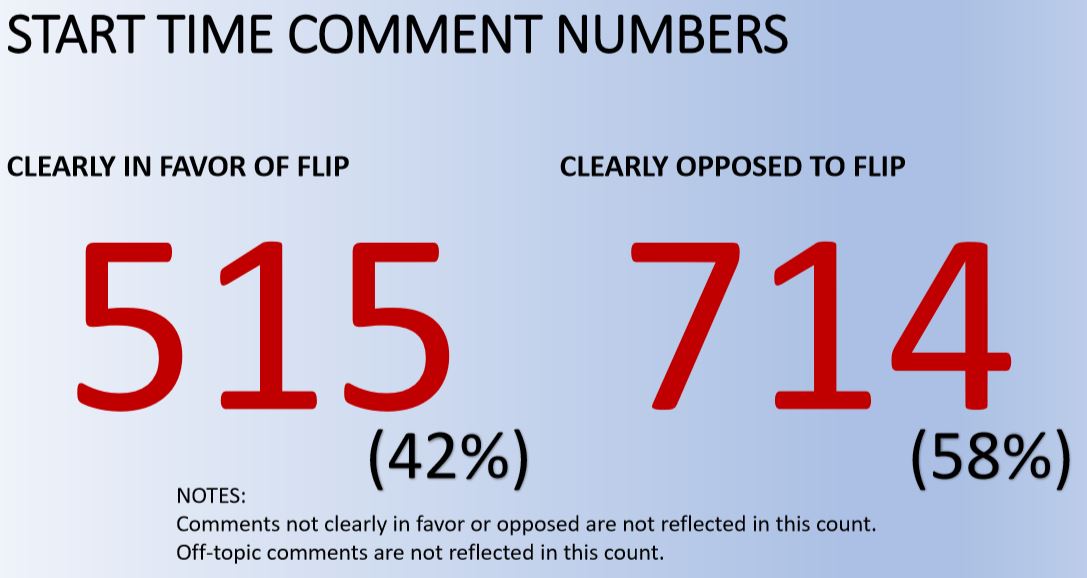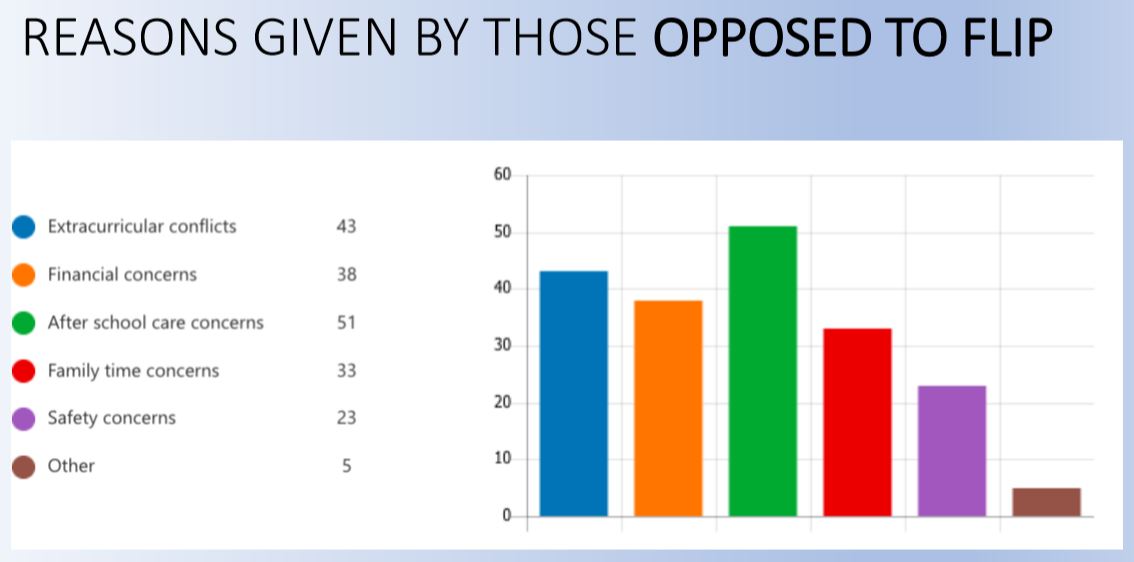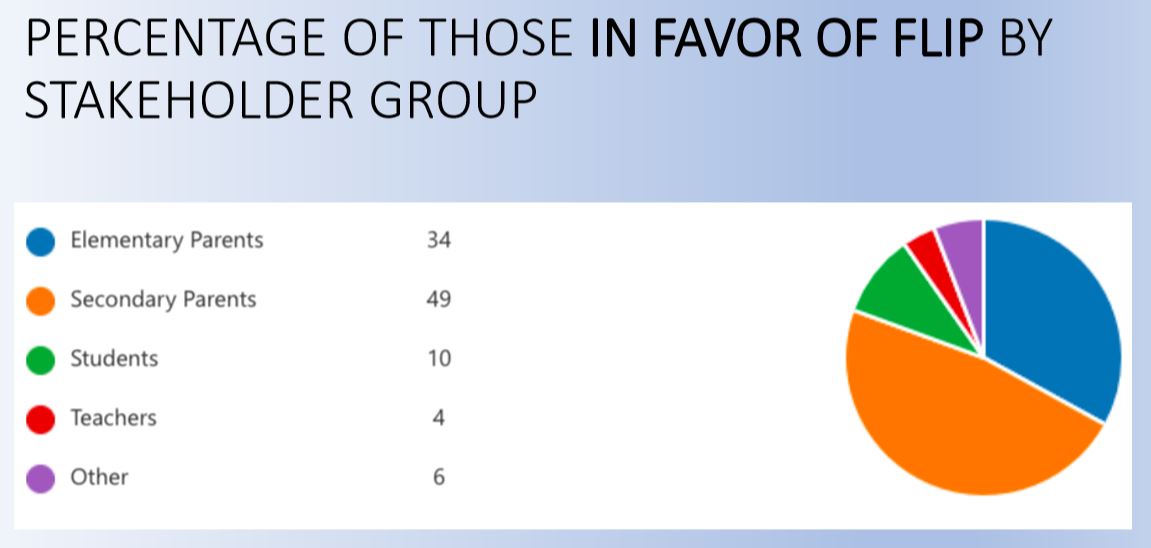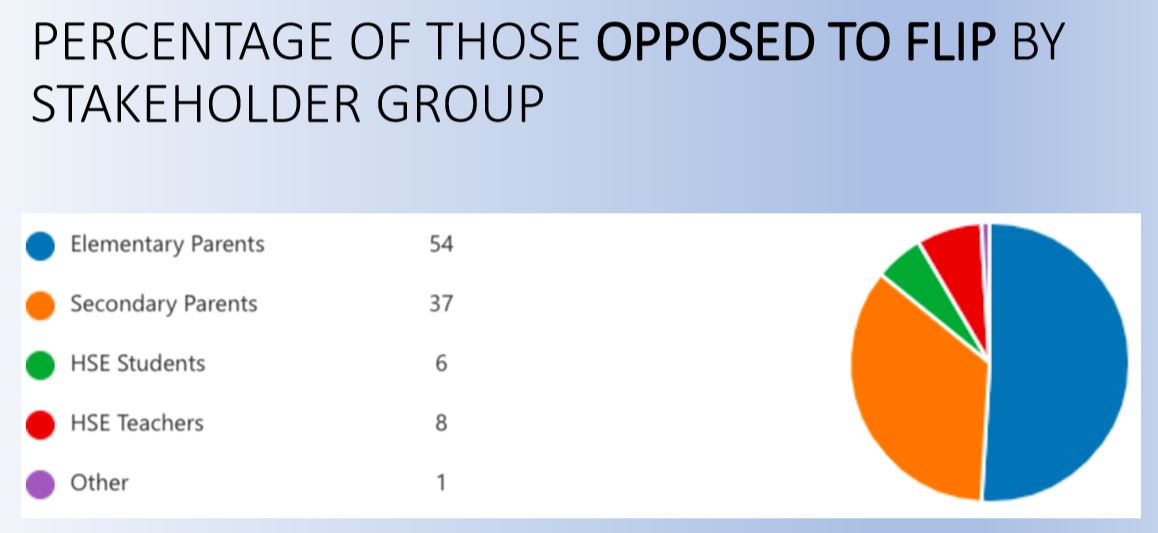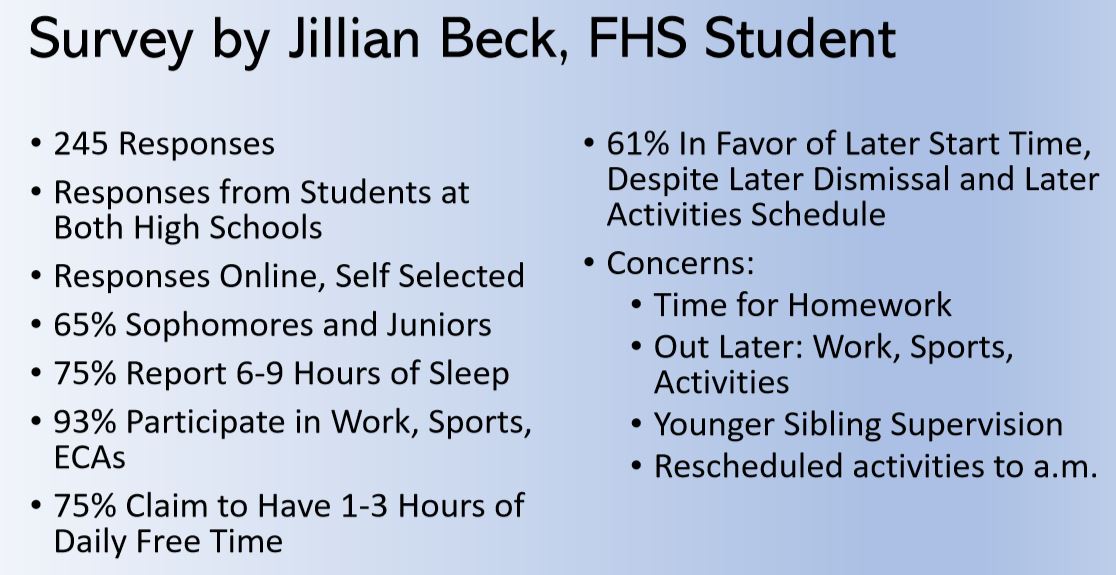What is the purpose of the grades that a child receives in a
class at school? What do the grades on a child’s report card represent and what
can you assume from that grade? What ramifications happen to a child as a
result of the grades they receive? More importantly, are the grades received
fair and equitable?
These are critically important questions for our schools.
Simply put, if grading is not equitable, then recognitions
such as honor roll, valedictorians, and rankings within classes become
erroneous at best. It is possible that a child could learn more yet earn a
lower grade than other kids that learned less but ended up with a higher grade.
In some situations, a child could fail or even be required to retake a class
simply because their teacher graded more strictly than other teachers.
I’m in a somewhat unique position to look at the issue of
equity in grading. I have twins that take a lot of the same classes but have
had different teachers. This provides insights into many of the questions that
I’ve listed above. In a few cases, what has been seen has been concerning, so
much so that I’ve raised concerns with teachers, principals, and even the
administration within our school district.
The Purpose of a Grade
It is interesting to discuss the purpose of a grade with
people in the education profession. The perspective on topics such as grading
scales can elicit strong opinions.
Ultimately grades are intended to assess a child’s
understanding of a topic. Having said that, there are questions that arise. One
of the core questions is whether a grade reflect the child’s understanding of
the topic when they’ve completed a grading period, or should the grade reflect
the child’s understanding of the topic throughout the learning of a topic.
While most people I talk to indicate that a grade should
reflect whether the child learned a topic, in most cases, that is not what a
grade is shows. Rather the grade shows the child’s understanding though the
process of learning. This measuring of the learning instead of the measurement
of the result can be impacted not only by the way a course is taught, but also
by several other factors. These include how tough a teacher grades, when
assessments are done, and the format used for assessments.
The “Timing Versus Performance” Factor
Let me use an example of a class with four children and ten
grades to illustrate the impact of grading the via the processes of learning
versus grading the results.
If a child requires repetitive actions to learn something,
then they might score poorly at the beginning of a grading period, but then do
better the longer they are in the class. By the end of a semester, once a topic
“clicks”, this child might be preforming at an above average level. Because of
the poor performance at the beginning of the semester, their grade could be
weighted down as shown by child 1 in the table below.
There could be another student that is more consistent in
their learning. This is shown as child 2 in the table below. As such, they could score a fair grade
consistently from the beginning to the end of the semester. In the end, this
‘fair and consistent’ learner could end up with a better grade than the child
that was slower to learn at the beginning, even though they might have learned
less by the time the semester was over.
A third child could be one that quickly learns the easier
material at the beginning of the semester, but as the course progresses, has
trouble and scores progressively worse. By the end of the semester, this child
could have learned the least amount of the more relevant information and retain
the least overall. Because of their
higher grades at the beginning of a semester, their grade could be skewed to
appear they know more than they ultimately do at the end.
| | Child 1 | Child 2 | Child 3 | Child 4 |
|
Grade 1
|
50
|
80
|
100
|
100
|
|
Grade 2
|
50
|
80
|
90
|
0
|
|
Grade 3
|
55
|
80
|
90
|
100
|
|
Grade 4
|
60
|
80
|
80
|
0
|
|
Grade 5
|
60
|
80
|
70
|
100
|
|
Grade 6
|
70
|
80
|
70
|
100
|
|
Grade 7
|
80
|
80
|
60
|
0
|
|
Grade 8
|
85
|
80
|
60
|
100
|
|
Grade 9
|
100
|
80
|
70
|
100
|
|
Grade 10
|
100
|
80
|
60
|
100
|
|
Average
|
71
|
80
|
75
|
70
|
Consider a fourth child. This is the child that is slow to turn in homework, or even fail to turn in homework. Since grades often reflect not only tests, but also homework, missing grades can be counted as zeros. Once these penalties are applied to a child’s grades, then the grade no longer reflects their understanding of a course’s material, but rather is more a reflection on their ability to turn things in on time. They might know the content from a class better than the teacher, but because they didn’t submit assignments at the correct times, they could be scored as if they didn’t know the material at all.
NOTE: Once a child is penalized on a score for not turning in an assignment on time, their grades no longer reflect learning. Similarly, once kids earn points for random activities such as winning a Bingo game, the grade no longer reflects learning, but rather is then based partially on luck.
The Teacher Factor
While the above table illustrates how different kids perform, the grades could also be impacted even more on how teachers assess a class. Across a school and even across a district, kids are taking classes that have the same objectives with an expectation of the kids learning the same things. For example, if kids are taking an eighth-grade honors foreign language class, then it is expected that each child will learn the same core information by the end of the course grading period. Thus, it is assumed that they would be assessed in a manner that allows the grades to be comparable regardless of which teacher they had within a school or within the district. In fact, for many classes, the consistency in teaching objectives is critical to ensure that the students are equally prepared for any subsequent classes that build on what was learned.
If one teacher is grading an eighth-grade honors class as if the kids were in high school because it is an honors class, yet another teacher is grading as if the kids a bit easier because they are at a junior high development level, then there would be a question of equivalence in the grades and grading. Similarly, if one teacher is giving tests in a class that are comprised of 100 questions each worth a point and another is giving test with 10 questions each worth 10 points, then it would be hard to consider the grades equitable since a child missing one question in one class would have an A and the child missing one question in the other class could have a B. As a third example specific to teaching a foreign language, if one teacher is grading kids only on how they say words, and a different teacher is testing on not only how they say words, but also grading spelling and punctuation, then the grades would not be fairly distributed.
Another teacher factor that causes disparity in grading is the concept of weighting grades. A recent example was brought to my attention where one teacher for a freshman high school course was weighting grades whereas another teacher was not. Because these are for the same class, the grades are no longer equitable.
Randomized Bonus Points
There are other areas that can impact equitable grading as well. Some teachers provide ways for students to get extra credit. Some teachers do not. If all students can earn the bonus points, then that is equitable. If, however, bonus points or grades can happen in a manner that not all kids can get them, then that leads to grades that are not comparable. Worse is when such bonus points come from activities that have nothing to do with learning or the materials being covered in a class.
There are three examples I can give that are unfair distribution of bonus points or grades that have happened within HSE schools. The first is the giving of bonus points as a prize for winning a game. Specifically, one of my kids has been in a class where the winners of a Bingo game received bonus points. These are points that improve a child’s grade out of sheer luck.
The second example is the use of ‘homework vouchers’ that
allow a child to skip a homework assignment without penalty. If a homework
assignment is being graded, then allowing one child to skip it as a prize means
that there is a potential for that child to not be assessed in the same manner
as others because they won’t have those points.
The third example I’ve mentioned before and comes from a world history class. In the case of teachers grading using similar questions and tests, the equity can be skewed if one teacher chooses to weight grades while another does not. This causes one class of students to potentially be graded with better scores, while the other is not.
Why Does All This Matter?
You cannot expect every teacher to teach and grade the exact same way. As such, it is easy to stick with tradition and state that it shouldn’t matter that things are not quite the same across classes. Having said that, because the grades that kids receive are ranked within most schools, and because grades are used for allocating scholarships and other recognitions, it becomes imperative that there is a high level of consistency.
In the case of some classes, if you don’t score high enough, you can’t proceed to the next class. This is the case in the eighth-grade honor’s foreign language class mentioned earlier. In the case of that course, there might be a student that would not have had to take the course over had they had a different teacher.
If the top 50 students receive a scholarship and your child is 51st, you should not have to wonder if you would have been one position higher if you had been in the class that weighted scores instead of the ones that didn’t.
Where to From Here?
If grades are expected to reflect an understanding on a
topic, then they need to focus on that understanding. This means that they need
to be adjusted to focus less on the process of learning and more on the process
of measuring the end results. Things such as bonus points for random acts or
grade penalties for late assignments need to go away. If the grade is focused
on reflecting learning, then these don’t belong in the grades. That isn’t to
say that accountability should be ignored within the schools, but rather it
should be presented separately from the grades that should be indicating
knowledge on a topic.
As schools move forward looking at measurements for preparing kids for the real world, more and more subjective factors are likely to creep into the mix of what teachers are teaching. It will be critical that the measurements that are presented – the grades – and grading system don’t get skewed as a result. In a math class within a school pushing a project-based environment, a child that excels at math should not be penalized in the course because they were not able to interact effectively with a group. Rather, they should have a grade in the class that reflects their math abilities. As school systems cycle to looking at the overall portrait of what they want kids to be able to do by the time they graduate, things like aptitude, leadership, grit, and other related characteristics should not dilute the core focus of grading for a class topic.
It is time to shake up and fix the grading system. To be a little redundant, let me say again that while the school systems are looking to measure such areas as decision making, information gathering, project management, grit, creativity, integrity, and leadership, they need to make sure the measurement and tasks associated to these is not impacting the core topics and expectations of the classes the kids are taking. A math class should have a grade reflecting math. These other core competencies are critically important to teach our kids, but they should be graded independently of the transference of knowledge that is expected in the current grading systems.
Tying This to HSE Schools
Within HSE, the disparity across similar classes has been noted by many parents, not just me. This past year it seems that the disparity was especially highlighted within the Honors Spanish classes at the eight-grade level. While this is a class offered to eight-graders, it is considered a freshman-level class. The inconsistency of how kids were graded across most of the year was reflected in the grades. As classes such as this become a part of a child’s GPA used for class rankings and future scholarships, these inconsistencies need to be reviewed and, while it might sound crazy, past grades need to be adjusted by the school district to make the grades not only more equitable, but to also better reflect what kids truly learned. In the chart presented earlier, Child 1 and Child 4 likely learned the most by the end of the grading period even though their grades were the lowest. That is extremely concerning to me as a parent and should be even more concerning to a school district.
HSE has made one move toward putting more weight on grades towards the end of the grading periods versus at the beginning. That is a start, but the inconsistencies in all the other areas mentioned in this article remain. Those need to be addressed. In the case of the Honors Spanish class, one teacher stated that they graded differently (and harder) than the other teachers, and indicated they graded in a different manner. This was clearly visible in the grades received by students. The district needs to address this.
# # #
After Thoughts for This Article
In this article, I’ve identified a problem with grading in our school system. For example, I indicated that the grading of core competencies for students are separated from the grades given for a class on a given topic. This is how elementary school grades are often done. In higher grades, it is imperative for teachers to make sure their grades are reflecting a child’s understanding of the course topic and not other factors.
Additionally, penalties and rewards that impact grades, but have nothing to do with knowledge understanding should go away. A grade no longer reflects understanding of the material if it was reduced or inflated because the child won a random game or even because they were late submitting. To be clear, a child should still be accountable for turning in assignments, but the consequences should happen outside of the grading for a course topic.
To maintain consistency across a large district such as HSE,
checks and balances should be put in place. Two teachers will never grade the
same, nor should we expect them to teach the same. While there are objectives
that must be met across the year, it might be time to make sure smaller,
milestone objectives are set throughout the year for each course and then allow
teachers time to connect to make sure they are all working arm-in-arm.
Similarly, the weight of grading for what is being taught should be applied to grading similarly. The school district has the data on grades. It is all digital. This means that grades for “like classes” can be compared. It should be expected that if all things are similar, then the mean and median grades for each group of kids taking a class should be similar. If one class is off by more than a few points after removing outliers, then a deeper look should be done to insure that this is truly the kids that didn’t learn at the same level as the others versus a case where a teacher simply didn’t grade at the same level. In a case where a teacher graded at a different standard, grades might need to be adjusted.
The district has an analytics group. They have the data to help identify issues such as grading inequity. As such, hopefully we see changes in the near future! Based on what I’ve seen, it is my opinion that there at least one class where grades should be adjusted because the teacher stated they graded the kids at a different level than the other teachers.
# # #


